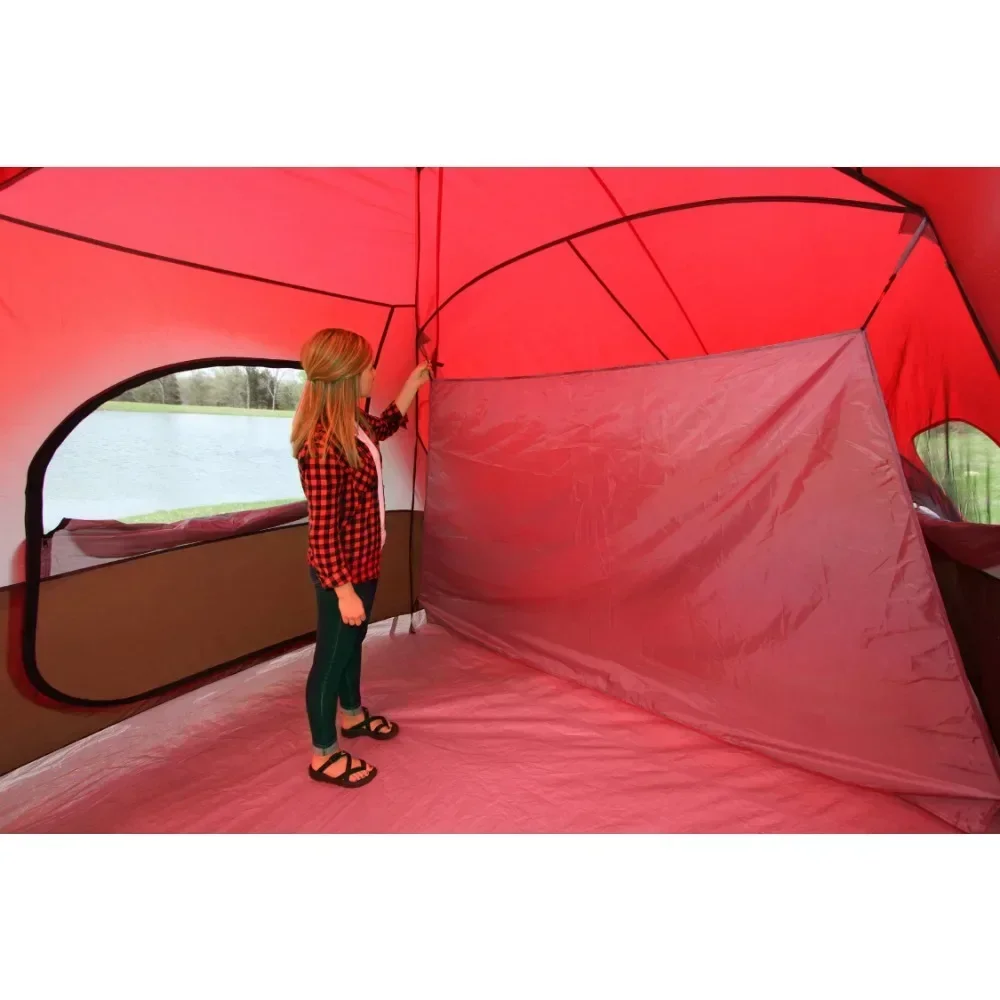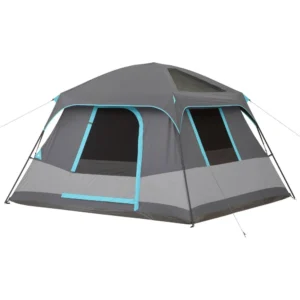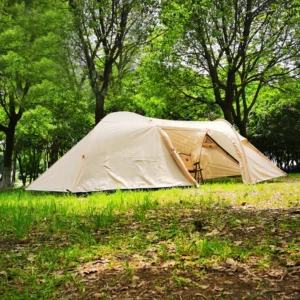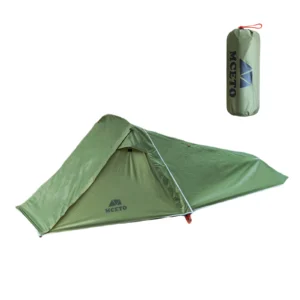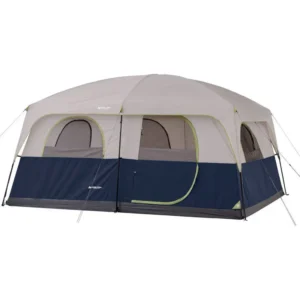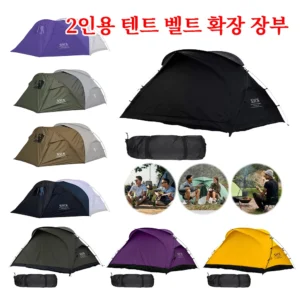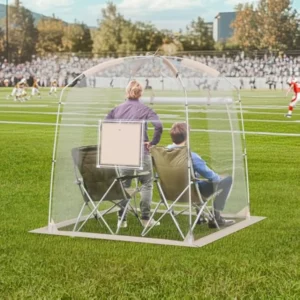Introduction to Privacy and Space in Couple-Sized Tents
Camping as a couple offers the perfect blend of adventure and togetherness, but finding the right balance between shared experiences and personal space can make or break your outdoor getaway. While the romantic notion of snuggling under the stars appeals to many, the reality of camping often involves practical considerations like changing clothes, organizing gear, and simply having room to breathe.
Many couples discover that standard two-person tents fall short of expectations, leaving them feeling cramped, frustrated, and less enthusiastic about their outdoor adventures. What’s marketed as a “two-person” tent often translates to “two people who don’t mind being extremely cozy” in reality.
This guide will transform your understanding of couple-sized tents, helping you select a shelter that serves as your private, spacious haven in the wilderness. Throughout these sections, you’ll discover:
- Key features that create genuine privacy in shared spaces
- Tent designs that maximize both floor space and usable volume
- Smart organization strategies to reduce clutter and increase comfort
- Recommendations for tents that excel in providing both privacy and space
With more couples embracing outdoor adventures together, understanding different shelter options for two campers becomes increasingly important for creating memorable experiences for all the right reasons.
Why Privacy and Space Matter for Couples Camping
Multi-Functional Living Space
Your tent serves as much more than just a sleeping area when camping. It becomes your changing room, gear storage, relaxation space, and shelter from the elements. When two people share this multi-functional space, having adequate room for each purpose significantly enhances comfort and reduces friction.
Psychological Comfort
The psychological impact of sufficient space cannot be overstated. Even the strongest relationships benefit from moments of personal space, and a well-designed tent can provide that balance. When campers feel they have adequate room to move and organize their belongings, overall satisfaction and enjoyment of the experience increases dramatically.
Common Pain Points
Most couples report similar frustrations with inadequate tents:
– Awkward entries and exits that disturb your partner
– Limited space for changing clothes comfortably
– Difficulty accessing personal items without disrupting everything
– Gear clutter that creates tripping hazards and reduces usable space
– Disturbed sleep from cramped sleeping arrangements
Privacy Beyond Your Partner
Privacy in camping extends beyond just the relationship dynamic. A tent that provides proper seclusion from neighboring campsites allows you to feel more relaxed and less self-conscious during your outdoor adventure. Understanding the appropriate size tent for 2 people makes camping more comfortable and enjoyable for everyone involved.
Key Features That Create Privacy and Space in Couple-Sized Tents
The N+1 Principle
One of the most valuable pieces of advice for couples seeking comfort is the N+1 principle—choose a tent rated for at least one person more than will be using it. This extra capacity provides crucial space for gear storage and movement. While a 2-person tent might technically fit two sleeping pads side by side, a 3-person tent offers the breathing room that transforms the experience from endurance to enjoyment.
Beyond Listed Capacity
Manufacturer capacity ratings typically represent the maximum number of people who can sleep shoulder-to-shoulder in a tent—not comfortable living space. When evaluating tents, pay attention to the actual measurements rather than just the person rating. The question of whether a 2-person tent is actually big enough depends entirely on your expectations and needs.
Floor Dimensions and Shape
Floor dimensions significantly impact comfort for two sleepers:
* Width: Standard sleeping pads range from 20-25 inches wide, meaning two pads side-by-side require at least 40-50 inches of tent width—plus space for gear
* Length: Typical pads measure 72-78 inches, but extra floor length allows for gear storage at your head or feet
* Shape: Rectangular floors generally utilize space more efficiently than tapered designs
Wall Design and Peak Height
The shape of your tent walls dramatically affects usable space:
* Dome tents have sloping walls that reduce usable volume
* Cabin-style tents feature more vertical walls, maximizing usable interior space
* Peak height determines whether you can sit up, kneel, or stand inside
* A higher peak height positioned centrally benefits both occupants
Dual Doors and Vestibules
Perhaps the most underrated feature for couples’ comfort is having two doors and vestibules:
* Independent entry/exit without disturbing your partner
* Personal storage space for boots, backpacks, and dirty gear
* Improved ventilation options
* Reduced traffic and bottlenecks inside the tent
Privacy-Enhancing Features to Look For
When selecting a tent that prioritizes privacy, certain design elements make a significant difference in creating your personal sanctuary:
Room Dividers and Compartments
- Internal dividers that create separate spaces within larger tents
- Opaque materials that provide visual separation
- Zippered or toggle closures for adjustable privacy levels
- Optional deployment that allows for flexible space configuration
Rainfly Design and Coverage
- Full-coverage rainflies extend to the ground, preventing others from seeing inside
- Vestibule configurations that allow for sheltered entry while maintaining privacy
- Strategic door positioning that faces away from high-traffic camp areas
- Awning options for creating private outdoor spaces
Window Design and Covers
- Mesh windows positioned for ventilation without compromising privacy
- Zippered privacy panels that can be deployed as needed
- Tinted mesh that reduces visibility from outside while maintaining your view
- Strategically placed windows that avoid direct sightlines from neighboring sites
Fabric Considerations
- Darker fabric colors reduce silhouetting and interior visibility
- Thicker, more opaque materials provide better visual privacy
- Higher denier ratings generally indicate less transparent fabrics
- Specialized privacy coatings or treatments on some premium models
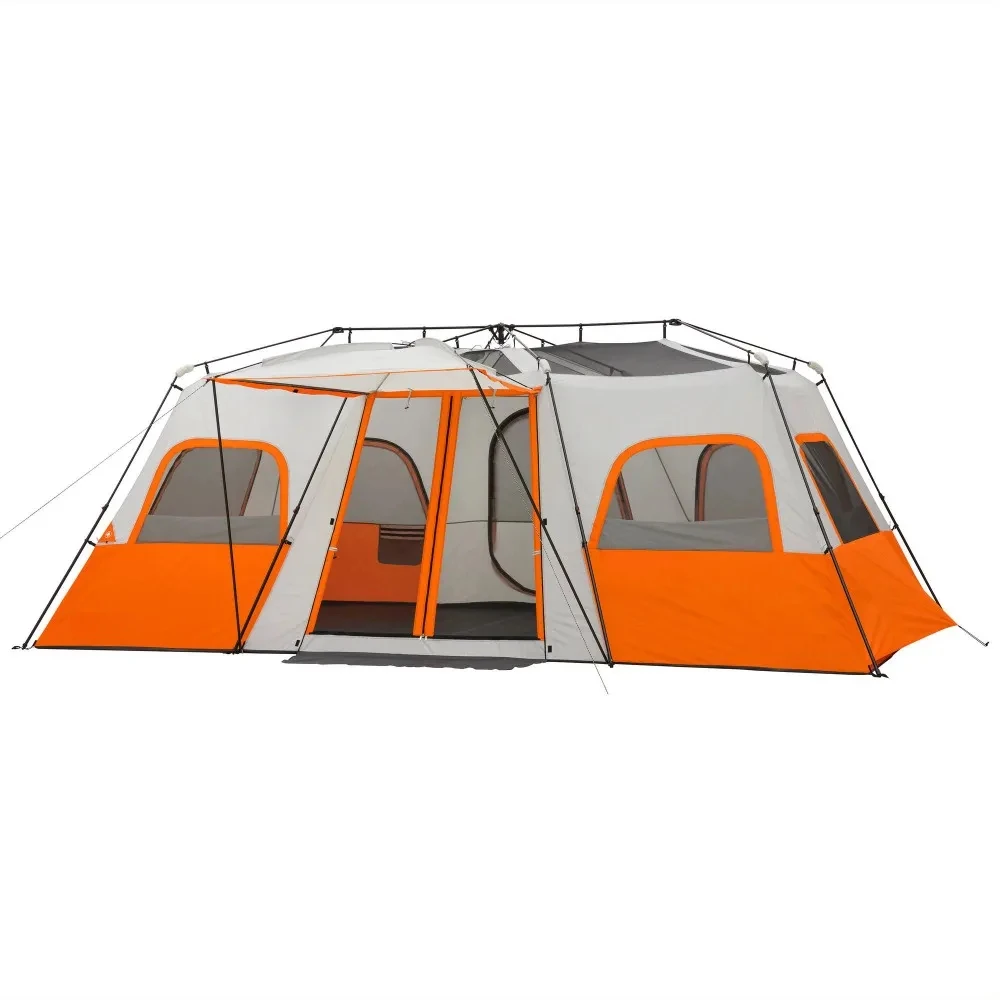
Interior Organization
Effective tent packing tips and organization systems keep floor space clear and create a less cluttered environment:
* Abundant interior pockets at varying heights
* Gear lofts for overhead storage
* Hanging points for lights and small accessories
* Designated storage areas for frequently used items
Tent Types: Finding Your Perfect Privacy-Space Balance
Backpacking Tents
Backpacking tents prioritize lightweight design while trying to maintain adequate space:
Pros:
* Lightweight and portable
* Often feature two doors and vestibules
* Generally quick to set up
* Usually more weather-resistant
Cons:
* Typically smaller floor area
* Limited headroom except at the peak
* Sloped walls reduce usable space
* Minimal privacy features
Best for: Couples who prioritize portability but value dual entrances and efficient design.
Dome Tents
These versatile tents balance interior space with setup simplicity:
Pros:
* Excellent stability in varied weather
* Decent headroom in the center
* Relatively simple setup
* Good value for money
Cons:
* Sloped walls reduce usable space
* Limited privacy features
* Generally only one or two doors
* Modest vestibule space
Best for: Couples seeking a balance between comfort and portability with moderate weather protection.
Cabin Tents
Cabin tents maximize living space with near-vertical walls:
Pros:
* Maximum usable interior volume
* Often include room dividers
* Superior headroom throughout
* Multiple windows and doors
Cons:
* Heavier and bulkier to transport
* Longer setup time
* More vulnerable to strong winds
* Usually more expensive
Best for: Couples prioritizing comfort and privacy for extended campsite stays.
Tunnel Tents
These offer excellent space-to-weight ratio with generous vestibules:
Pros:
* Efficient use of materials for maximum space
* Extended vestibules for gear storage
* Good headroom along the center ridge
* Often lighter than cabin-style options
Cons:
* Require proper staking and guying out
* Less freestanding than dome designs
* Limited cross-ventilation options
* Privacy depends largely on the rainfly design
Best for: Couples wanting a balance of space and weight with extended protected storage areas.
For those seeking maximum separation while sharing a shelter, two-room camping tents offer excellent options with built-in privacy features.
Top Tents for Couples Seeking Privacy and Space
Best Overall Tents for Combined Space and Privacy
Cabin-Style Options
* Floor area: 60-70 square feet
* Peak height: 6+ feet
* Key features: Near-vertical walls, room dividers, multiple doors
* Best for: Car camping, extended stays, couples who value indoor living space
These spacious shelters feature near-vertical walls that maximize usable space, often incorporating room dividers for privacy. While too heavy for backpacking, they excel at campground comfort, essentially functioning as a fabric cabin.
Extended Dome Designs
* Floor area: 35-45 square feet
* Peak height: 4-5 feet
* Key features: Extended floor plan, dual doors, generous vestibules
* Best for: Mixed car camping and short backpacking trips
These hybrid designs offer better weather resistance than cabin tents while providing more space than typical backpacking models. The extended floor plan allows couples to spread out while keeping gear organized in substantial vestibules.
Best Backpacking Tents Balancing Weight and Livability
Lightweight Two-Door Options
* Trail weight: 3-4 pounds
* Floor area: 28-32 square feet
* Key features: Two doors/vestibules, near-vertical side walls
* Best for: Couples who backpack regularly but don’t want to compromise on comfort
These technical shelters save weight through advanced materials rather than by reducing features. Look for models with steep sidewalls that maximize usable space and symmetrical designs that treat both occupants equally.
Ultralight Shelters
* Trail weight: Under 3 pounds
* Floor area: 25-30 square feet
* Key features: Minimalist design, trekking pole support, strategic space utilization
* Best for: Weight-conscious backpackers who prioritize distance over in-tent comfort
These specialized shelters require some adaptability but reward users with significantly reduced pack weight. Many ultralight designs now incorporate clever features to enhance livability despite their minimal weight.
Budget-Friendly Options Without Major Privacy Compromises
Value-Oriented Weekend Tents
* Price range: $100-200
* Floor area: 30-40 square feet
* Key features: Simplified version of premium features, decent materials
* Best for: Occasional campers seeking comfort without a major investment
These accessible options incorporate many privacy-enhancing features found in more expensive models, though often with simpler implementations and heavier materials. Many feature dual doors and adequate vestibule space at a fraction of premium prices.
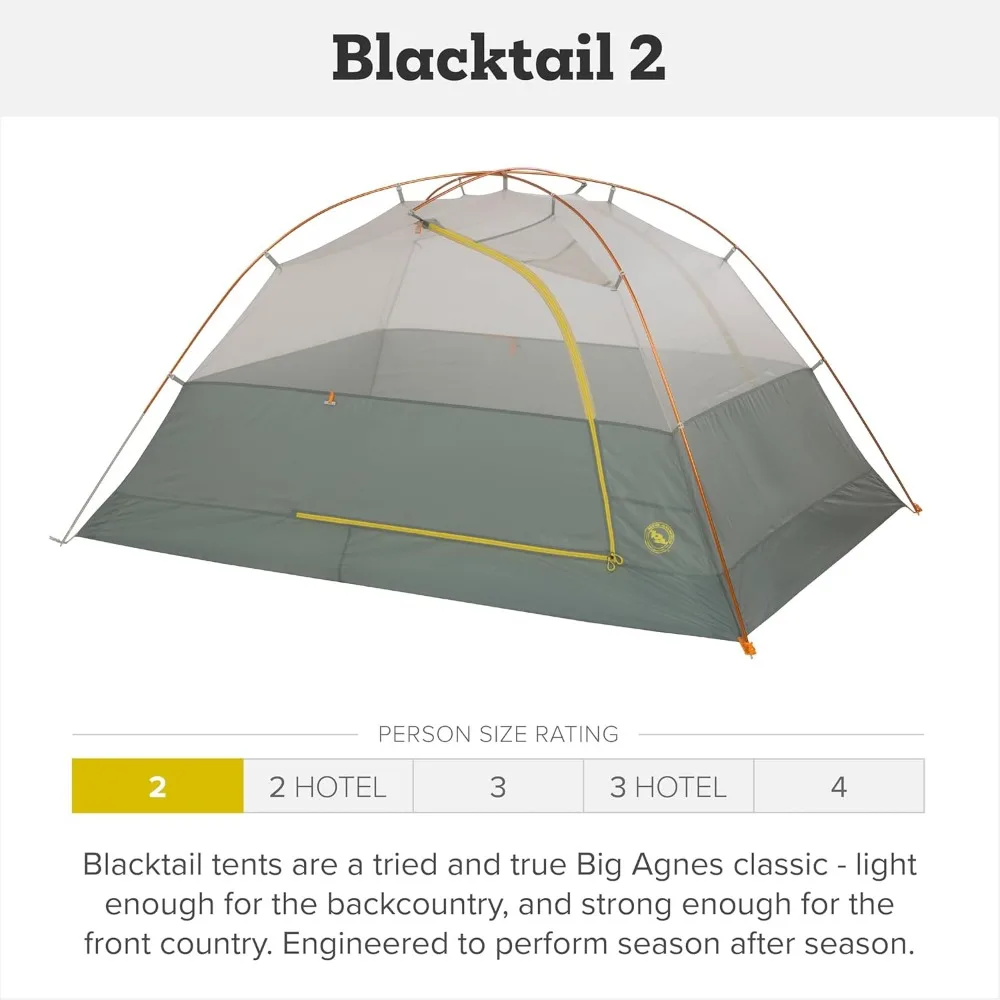
Tents with Standout Privacy Features
Multi-Room Designs
* Floor area: 80+ square feet
* Key privacy features: Built-in room dividers, multiple doors, opaque materials
* Best for: Couples wanting maximum separation while still sharing a shelter
These larger shelters effectively function as multiple tents connected into one structure. Fixed or removable dividers create distinct rooms within the tent, allowing for significant privacy when desired.
Tunnel Extensions
* Floor area: Variable depending on configuration
* Key privacy features: Modular design, adaptable spaces
* Best for: Couples wanting flexibility in their privacy arrangements
These innovative designs allow for reconfiguration based on your needs, with optional extensions, vestibule additions, and interior organizers that can create varying levels of separation.
Tall / Stand Up Camping Tent, Two Room Camping Tent
$407.93 Select options This product has multiple variants. The options may be chosen on the product pageCamping Tent with Vestibule, Waterproof Camping Tent
Price range: $407.89 through $479.48 Select options This product has multiple variants. The options may be chosen on the product pageBackpacking Tent with Vestibule, Freestanding Backpacking Tent, Lightweight Backpacking Tent
Price range: $446.89 through $447.22 Select options This product has multiple variants. The options may be chosen on the product page- $476.52 Select options This product has multiple variants. The options may be chosen on the product page
Backpacking Tent with Vestibule, Trekking Pole Backpacking Tent, Waterproof Camping Tent
Price range: $271.99 through $519.52 Select options This product has multiple variants. The options may be chosen on the product page
The convenience of tents with vestibules cannot be overstated, as they provide additional storage space that keeps the main sleeping area uncluttered and more spacious.
Beyond the Tent: Enhancing Privacy at Your Campsite
Creating privacy extends beyond your tent choice to include your entire campsite setup. Thoughtful placement and additional equipment can significantly enhance your sense of seclusion:
Strategic Site Selection
- Choose edge sites that border natural features like bushes, trees, or slopes
- Look for natural depressions or raised areas that create visual barriers
- Position your tent entrance away from neighboring campsites
- Consider morning sun exposure when orienting your tent (unless you enjoy early wake-ups)
Creating External Privacy Zones
- Set up tarps as windbreaks and visual screens
- Use your vehicle as a strategic buffer between your site and others
- Position your dining/cooking area to create a courtyard effect
- Utilize portable privacy screens designed for camping
Campsite Etiquette
- Respect unspoken boundaries between sites
- Keep voices down, especially in the early morning and evening
- Follow established paths rather than cutting between campsites
- Be mindful of lighting that might shine into neighboring tents
Internal Organization Strategies
Effective vestibule organization maximizes available space and improves the camping experience:
* Create designated zones for specific activities
* Use compression sacks to minimize the volume of soft goods
* Establish “his and hers” sides for personal belongings
* Implement a “clean zone” policy for the sleeping area
Making the Right Decision: A Couple’s Tent Selection Guide
Prioritizing Features
When evaluating tents, consider which features matter most for your specific camping style:
- Weight vs. Space: How will you transport the tent? Car camping allows for larger, heavier options
- Weather Protection: Consider typical conditions for your camping seasons and locations
- Setup Complexity: Will you frequently set up in the dark or in challenging conditions?
- Privacy Requirements: How important are features like room dividers or strategic door placement?
- Ventilation Needs: Consider typical climate conditions where you’ll camp most often
Balancing Features with Budget
- Identify your “non-negotiable” features before shopping
- Consider where you’re willing to compromise (weight, setup speed, durability)
- Evaluate cost-per-use based on your camping frequency
- Look for previous season models for significant savings on premium tents
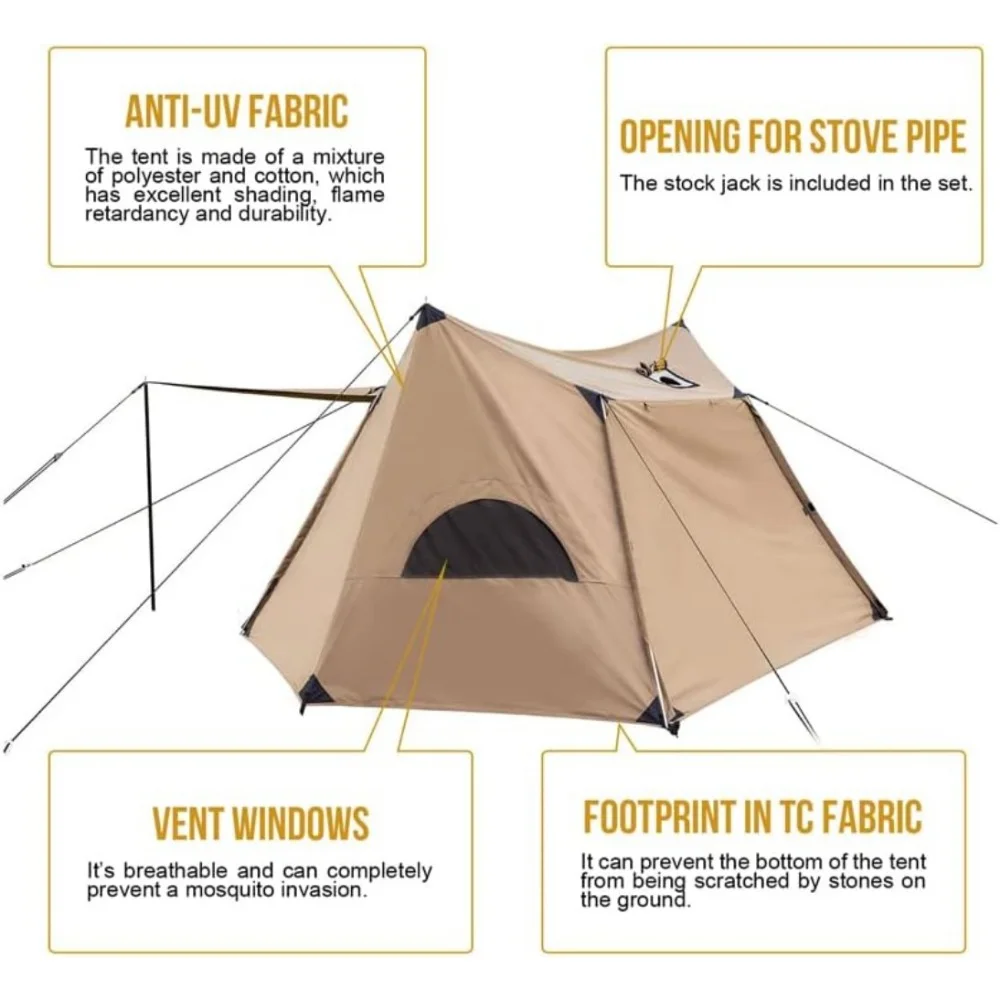
Research Questions
When researching tents online, ask yourself:
* What is the actual floor area in square feet (not just person capacity)?
* How many doors and vestibules does it have?
* What is the peak height and where is it positioned?
* Does the tent include any privacy-enhancing features?
* What do reviewers say specifically about space and comfort for two people?
Hands-On Evaluation
Whenever possible, try before you buy:
* Set up the tent in-store or borrow a friend’s tent before purchasing
* Bring your sleeping pads to test actual fit and arrangement
* Practice getting in and out without disturbing the other side
* Test accessibility of storage pockets from sleeping positions
For campers who value standing height inside their tent, tall stand-up camping tents offer excellent headroom and more usable interior space.
Enhancing Your Tent’s Privacy and Space: Organization Tips
Even with the perfect tent, smart organization makes a tremendous difference in livability and comfort:
1. Packing Strategies
- Use compression sacks for clothing and soft goods
- Opt for collapsible versions of camp essentials
- Choose gear with multiple functions to reduce overall volume
- Pack items inside others where possible (like stuffing clothes in cooking pots)
2. Storage Solutions
- Utilize hanging organizers that mount to tent walls or ceiling
- Employ under-mattress storage for flat items
- Invest in specialized tent storage pockets as aftermarket additions
- Consider weather-resistant external storage containers for vestibules
3. Zone Creation
- Designate specific areas for changing clothes
- Create a “nightstand” zone for each person with essentials within reach
- Establish a shared gear zone for items used by both people
- Keep dirty/wet items separate from clean/dry gear
4. Lighting Considerations
- Use directional lighting options rather than bright central lights
- Consider red light options that preserve night vision and privacy
- Employ strategic exterior lighting to illuminate trip hazards
- String small lights along tent ridgelines for ambient illumination
The innovative designs found in backpacking tent vestibules provide critical extra storage space while maintaining the tent’s compact footprint.
Conclusion
Finding the perfect balance of privacy and space for couple’s camping transforms your outdoor adventures from merely tolerable to genuinely enjoyable. The right tent serves as your home away from home—a sanctuary that allows you to enjoy both togetherness and moments of personal space.
By prioritizing features like dual doors, adequate floor space, and thoughtful storage solutions, you create an environment where both partners can thrive. Remember that the best tent for couples isn’t necessarily the most expensive or the lightest, but rather the one that best addresses your specific needs and camping style.
At Explore Elements, we understand that outdoor adventures are deeply personal experiences. Whether you prefer the minimal approach of ultralight backpacking or the comfort-focused design of cabin-style tents, the perfect balance awaits. With the right knowledge and a clear understanding of your priorities, you’ll find a tent that enhances your connection with both nature and each other.

